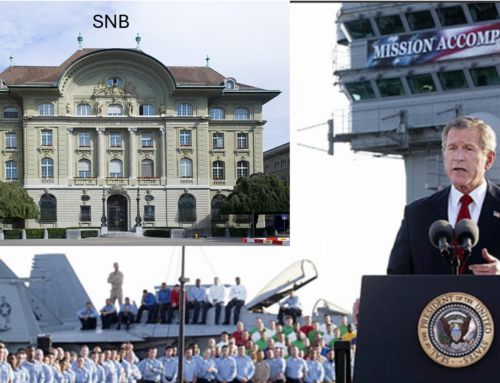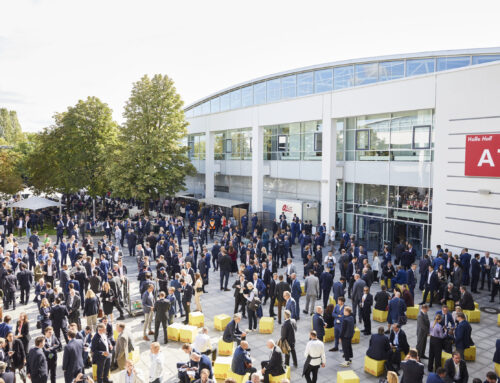Finally, it could take place again in the usual setting, as before Corona: the Exporeal, the largest and most important real estate conference in Europe.
The joy of seeing each other again was evident be it refreshing former connections from pre-Corona days, be it physically meeting partners we only interacted with via Zoom or teams. In view of the current challenges of the capital market environment, the credo of most participants can be summarized briefly and succinctly: We are on the sidelines. Most participants are likely to have left the conference with a cautious outlook.
Macro Real Estate already advised caution at the end of 2021 (see our blog post of January 10, 2022 where we discussed, among other things, profit realization in Swiss real estate funds, unfortunately only in german). Despite all the unforeseen events, such as the war in Ukraine, this downturn in sentiment comes as no surprise to us. The industry now finally seems to be arriving at the new macroeconomic and geopolitical reality. The monetary policy turnaround has taken place. Even if inflation should hopefully fall again, we expect a decade characterized by structurally higher inflation. According to our assessment, the phase of deflationary trends that lasted between 2000-2020 is now behind us. Structurally higher interest rate levels characterize our medium-term outlook, even though we also expect interest rate cuts again from 2024.
The direction of the journey seems clear. Net yields for most core real estate markets (including Switzerland) are about 75-150 basis points too low according to our models, if interest rates can hold at these higher levels over the medium term. In contrast, the situation in most real estate rental markets can be characterized as healthy.
Low vacancy rates and a shortage of space continue to shape events in the residential and logistics real estate markets. In these two sectors, despite our expectation of a severe recession in Europe and a mild recession in the US, we continue to see higher market rents in the medium term, although we have different assessments by region. Political intervention in residential real estate markets should not be underestimated and is likely to become more accentuated.
Office and retail properties are in a post-Corona recovery phase. According to our data, space take-up increased significantly globally in the first three quarters. The performance of retail real estate depends very much on micro factors. We remain cautious here and see more of a dead cat bounce given the challenges facing household budgets (higher inflation, interest rate and energy costs).
The office market is divided into two parts. In Europe and Switzerland in particular, we are seeing significantly higher new rents for new construction projects, but at the same time vacancies and problems with low-quality office space are on the rise. In addition, we believe that too little capex is still being priced into the valuation models if the common decarbonization targets are to be met.
We continue to be bullish on the rental market performance of “alternative real estate” ( Hotels, Student Housing or Health Care RE). Here, there is still great relative catch-up potential for the capital markets due to the current low allocation of investors. Investors still have too much office allocations internationally (and too much residential in Switzerland) and too little alternative real estate in their portfolios. We expect further portfolio shifts in the coming years.
Up to and including Q2 2022, valuations of direct as well as indirect real estate portfolios in Switzerland, Europe, Asia, and the U.S. were stable, and values even increased significantly compared to Q1 2021. However, bid-ask spreads in the capital markets widened sharply. Compared with previous years, significantly fewer transactions are taking place. When they do take place, they predominantly close at around 15%-25% lower levels than were required at the beginning of the year. We see signs that the rise in net yields, which tended to be limited to the U.S. in Q2 2022, now accelerated in Europe in Q3 2022. This trend is expected to continue in Q4 2022. Switzerland is lagging behind. Here, the adjustments are not likely to take effect until 2023, as the valuers seem to struggle to price the interest rate turnaround correctly into the discount rates.
Given the difficult capital market environment, it is not surprising that the majority of investors are currently taking a wait-and-see approach. The volatile interest rate environment makes it difficult to calculate expected IRRs at all, as interest costs are subject to large fluctuations in some cases. With the exception of Japan, the nice financing spreads of 200 basis points or more between net real estate yields and financing costs are a relic of the recent past.
In addition, there are external factors. We got to hear in some conversations that the “denominator effect” was an important factor, especially for pension funds. Due to the high losses on their bond and equity portfolios (in the UK they even had to be bailed out by the Bank of England), real estate ratios have now risen. Currently, many international real estate investors are determining investment budgets for the coming year. New money for investment in the real estate markets is expected to be lower for next year. Redemptions in vehicles with open ended structures are to be expected after the listed real estate markets have corrected significantly. However, this will vary greatly by product, country or sector.
Accordingly, we expect substantial valuation corrections in the coming quarters, both abroad and to some extent in Switzerland.
To be sure, such corrections still need to happen. Smart investors are already thinking about what to do when devaluations and fire sales become fact. It doesn’t hurt for direct investors to keep a filled war chest on hand to respond to distress. Value added or opportunistic funds are likely to be most agile in such a phase, or core funds that are only now being launched. There is currently no rush for a fund selection. But we should take advantage of the current environment to define a clear strategy for how to proceed next year. Our experience is that such phases of lower capital market and investment activity should be used for analysis and strategy development. The latter costs time. This puts you ahead of other investors who react late and sometimes in a panic to a new environment.
Selectivity is gaining in importance. The higher interest costs also mean that the skills of investment managers are becoming more important. Too many “passengers” have only benefited from the tailwind of lower discount rates and positive financing spreads in recent years. We now expect the relative performance between good and bad managers to accentuate significantly. You soon know who is swimming naked
Macro Real Estate’s extensive experience during the financial crisis with distressed real estate assets in the US, UK, Japan and Southern Europe can help it to make the right capital allocation decisions in a more challenging period. We stay on the ball.







Leave A Comment